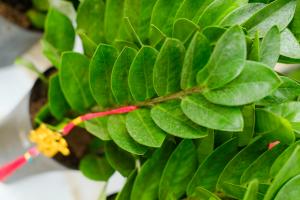Introduction
Water plants help to maintain a balanced and healthy aquatic environment. They play a vital role in maintaining the ecological balance in aquatic habitats. However, the natural balance can be disturbed due to various reasons like human activities, climate change, and pollution. This is where water plant treatments come in, and they are essential in restoring the natural balance and maintaining a healthy aquatic environment.
What are water plant treatments?
Water plant treatments involve the use of different techniques to restore and maintain aquatic habitats. The treatments include the use of chemicals, biological and mechanical techniques. These techniques aim to control aquatic weeds, algae, and other plants that may hinder the growth of other aquatic plants or fish. The treatments help in maintaining a healthy aquatic ecosystem by providing a balanced environment for the plants and animals.
Why are water plant treatments important?
Water plant treatments are essential in maintaining a healthy aquatic ecosystem. Aquatic plants play a critical role in the aquatic ecosystem, as they provide oxygen and absorb carbon dioxide. They also serve as food and habitat for fish and other aquatic animals. However, the overgrowth of aquatic plants can cause harm to the ecosystem in various ways:
Reduced water flow: Overgrown water plants can reduce water flow, which can cause problems for aquatic animals and plants.
Reduced oxygen: Overgrown water plants can also reduce oxygen levels in the water, leading to the death of fish and other aquatic animals.
Spread of invasive species: Overgrown aquatic plants may also provide a habitat for invasive species, which can harm the ecosystem.
Obstructed navigation: Overgrowth of aquatic plants in waterways can obstruct navigation, leading to safety hazards and other problems.
Water plant treatments help to control the growth of aquatic plants and prevent the above problems from occurring. The use of these treatments ensures a healthy and balanced aquatic environment for plants and animals.
The importance of choosing the right water plant treatment
Choosing the right water plant treatment is essential for maintaining a healthy aquatic environment. Different treatments may be suitable for different types of water plants or aquatic habitats. Therefore, it is essential to understand the type of water plant and aquatic environment before choosing a treatment. Using the wrong treatment can have adverse effects and cause more harm than good.
Chemical treatments are commonly used to control the growth of aquatic plants. However, they can have negative impacts on the environment if not used correctly. For instance, the chemicals may harm fish, birds, and other aquatic animals. Therefore, it is crucial to use the appropriate amount of chemicals and employ the correct methods of application to minimize the adverse effects.
Other water plant treatments, such as manual removal or biological control, are more environmentally friendly and have fewer negative impacts. Therefore, it is crucial to choose the right treatment based on the specific needs of the aquatic environment to safeguard the health and wellbeing of the ecosystem.
Conclusion
Water plant treatments are vital in maintaining a healthy aquatic habitat for plants and animals. The treatments help to control the growth of aquatic plants, prevent the spread of invasive species, maintain water flow, and provide a balanced environment for the plants and animals. However, it is essential to choose the right treatment based on the specific needs of the aquatic environment to ensure positive outcomes. By using the correct water plant treatment, we can help to sustain healthy aquatic habitats for generations to come.

 how many times do yo...
how many times do yo... how many planted tre...
how many planted tre... how many pine trees ...
how many pine trees ... how many pecan trees...
how many pecan trees... how many plants comp...
how many plants comp... how many plants can ...
how many plants can ... how many plants and ...
how many plants and ... how many pepper plan...
how many pepper plan...
































